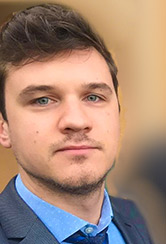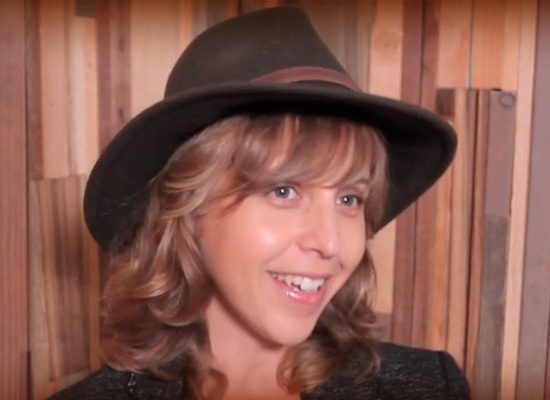When Keelan Dimick was three years old, he started tinkering on the piano. At first he taught himself to play by ear, then took two years of instruction in classical piano. But it wasn’t until he switched to jazz that great things started to happen.
At age 13, just four months after taking his first jazz piano lesson, he won first place in the junior division of the Lionel Hampton International Jazz Festival. Two years later, he won first place in the senior division and was recruited by top music schools.

Keelan Dimick, jazz pianist
It turns out that Keelan had a secret weapon that set him apart from other contestants—his practice of the Transcendental Meditation® (TM®) technique.
“It’s easier to get into the zone when you do your meditation regularly,” he says. “It also balances the whole system, calms you down so it’s easier to let go. That’s the main thing when playing jazz, to let go. Then the music will play itself.”
Keelan, who earned his B.A. from the Manhattan School of Music and his masters degree in Studio Music and Jazz Performance from the Frost School of Music at the University of Miami, says that with regular meditation, composing music is easier too: “You plant a seed and then let the music write itself. Meditation helps you stay on the feeling level. The more intellect you put into your music, the less moving it’s going to be to an audience.”
“It’s easier to get into the zone when you do your meditation regularly. It also balances the whole system, calms you down so it’s easier to let go.” —Keelan Dimick
He’s excited about opportunities that pop up, including a New Year’s Eve gig in Santa Barbara with a big jazz band that played Keelan’s own compositions. And he took two months to help set up a jazz music program to train faculty at a Filipino university.
Keelan is one of thousands of young people who are turning to the TM technique not only to give them a cutting edge as students, but also to help them launch their careers in the competitive field of the creative arts.
“You plant a seed and then let the music write itself. Meditation helps you stay on the feeling level. The more intellect you put into your music, the less moving it’s going to be to an audience.” —Keelan Dimick
Overcoming Dyslexia, Anxiety, and Depression
Dana Farley is a Long Island native who credits the Transcendental Meditation technique with helping her overcome the challenges of dyslexia, as well as teenage anxiety and depression. A chance meeting with director David Lynch started her on the path to TM and filmmaking.

Dana Farley, filmmaker
“I was a sophomore in high school, and my mom asked me, ‘Do you want to go to the city and meet a director?’ I was really into film, so I hate to admit that I didn’t know who David Lynch was at the time. But I went to the meeting where he showed us a video of kids in an inner-city school who, thanks to the David Lynch Foundation, had started practicing TM,” she remembers.
“They sat quietly and meditated twice a day; there was no more school violence, and the kids did better in school,” she explains. “After hearing that, I was interested in learning the technique and seeing what it could do for me.”
Having struggled with severe dyslexia since childhood, Dana says, “I had a lot of insecurities when it came to school. Since starting TM, I’m not putting myself down all the time. The negative thoughts just don’t appear. Instead of thinking, ‘I can’t do this,’ I’m thinking, ‘Why not?’ ”
Aware of the high stress levels and a troubling rise in suicide rates and depression in American teenagers, Dana had the idea to create a documentary about her own TM experience. She started making the film in high school, and continued working on it even while an undergraduate at Bucknell University. Even though Dana majored in English, she joined a film club to get more practice behind the camera.
“Since starting TM, I’m not putting myself down all the time. The negative thoughts just don’t appear. Instead of thinking, ‘I can’t do this,’ I’m thinking, ‘Why not?’ ” —Dana Farley
A Sense of Inner Freedom
Dana’s perseverance paid off. While she was still a junior in college, her documentary Beyond the Noise: My Transcendental Meditation Journey, which featured David Lynch and Dana, was released and received a favorable response at the Marbella International Film Festival.
In the film, Dana talks about how TM practice can help young people deal with stress: “Instead of running away from or avoiding the problems and hassles you have by taking drugs or fooling around in other ways, TM practice helps bring a sense of inner freedom, of being ‘high’ in a completely natural way. It gives you a lift in your spirits—a freedom from the stress you are feeling and the sense of burden you are feeling.”
Since the film came out in 2011, Dana has created another documentary, completed internships with Howard Stern radio, and graduated from college. In the past few years, she has continued her work in the film industry, including positions at the Tribeca Film Festival and Magnolia Pictures in New York, and as a Production Assistant for the Showtime network on David Lynch’s iconic Twin Peaks series.
“I think of where I want to be in ten years, and it would be nice to, in some way, make a difference, to help people, to leave the world a little bit better than it was before,” she says.
“TM practice helps bring a sense of inner freedom, of being ‘high’ in a completely natural way. It gives you a lift in your spirits.” —Dana Farley
Looking for Something More
Tanell Pretorius of South Africa has taken a different route—postponing college to pursue a glamorous London modeling career that included TV commercials for Sony PlayStation, catalogue work for Marks and Spencer, and shoots with Rankin, the legendary British photographer.

Tanell Pretorius, writer and consultant
“The TV work was really fun,” she says. “You’d arrive at 5:00 a.m. and see hundreds of lighting people, gaffers, and set designers running around, and often you’d be the hero of the whole thing.”
But the long hours (one shoot started at 3:00 in the afternoon and lasted until 9:00 the next morning) and the pressure of constant self-scrutiny started to take their toll.
“In modeling, your body is your product,” Tanell says. “Like most models, I started to develop weird habits with food. I was working out too much and injured myself. That’s when I found meditation.”
The Thing That Makes Life Complete
Tanell says that all her life, she had been looking for something more, even after becoming a top model. “When I started the TM technique, I immediately felt that this was the missing part of life, this was the thing that makes life complete, that makes it full and amazing. I started to feel so deeply in touch with myself, a lot more connected to my body and my needs.”
At that point Tanell decided to leave full-time modeling and explore her love of learning at Maharishi University of Management in Fairfield, Iowa. A media and communications major, she also worked toward certification as a Maharishi AyurVeda® wellness consultant to use her skills in writing to share with other women what she’s learned about health, yoga, and fitness.
“When I started the TM technique, I immediately felt that this was the missing part of life, this was the thing that makes life complete, that makes it full and amazing.” —Tanell Pretorius
“I’d love to help women to get more in touch with themselves, to work out, and choose what to eat from an intuitive level rather than from what a magazine or an article is telling them to do,” she says.
As an undergraduate, Tanell began writing for a regional magazine on health and fitness topics. She says TM practice helps writers because “the fog of stress goes away, and you’re able to experience life more richly. With the TM technique, you get more in touch with the universal truths of life. That’s what makes any art powerful—whether it’s writing or film or music. TM practice allows the writer to feel and experience those truths more deeply, and so the audience can also feel more deeply.”
Feeling the Largeness of Life
These three creative millenials have one thing in common: they all highly recommend the TM technique to other young people.
“When you’re a student, it’s easy to float around and get lost, defeating the purpose of going to college—which is to get grounded and to learn, not to party all the time,” says Keelan. “Meditation helps you to prioritize and puts you automatically on the right path.”
Tanell agrees. “It helped me to not be so confused by the little things, moment to moment,” she says. “The great thing about the TM technique: you’re not just talking about the bigger picture; you’re experiencing it. And it’s so freeing, so liberating, to feel the largeness of life, how big you really are as a person, within yourself. Then you don’t get lost in the small things.”
“The great thing about the TM technique: you’re not just talking about the bigger picture; you’re experiencing it. And it’s so freeing, so liberating, to feel the largeness of life, how big you really are as a person, within yourself.” —Tanell Pretorius






These stories are so inspiring. I’d like to pass them on to other young non-meditators. How can I do that?
Thanks for your wish to share these stories, Cheryl! One easy way is to use the social buttons on the articles to post on FB or to email to individuals. Also feel free to quote parts of the article with a link to the source, or simply to post a link to the article in an email. Thanks, and happy sharing!